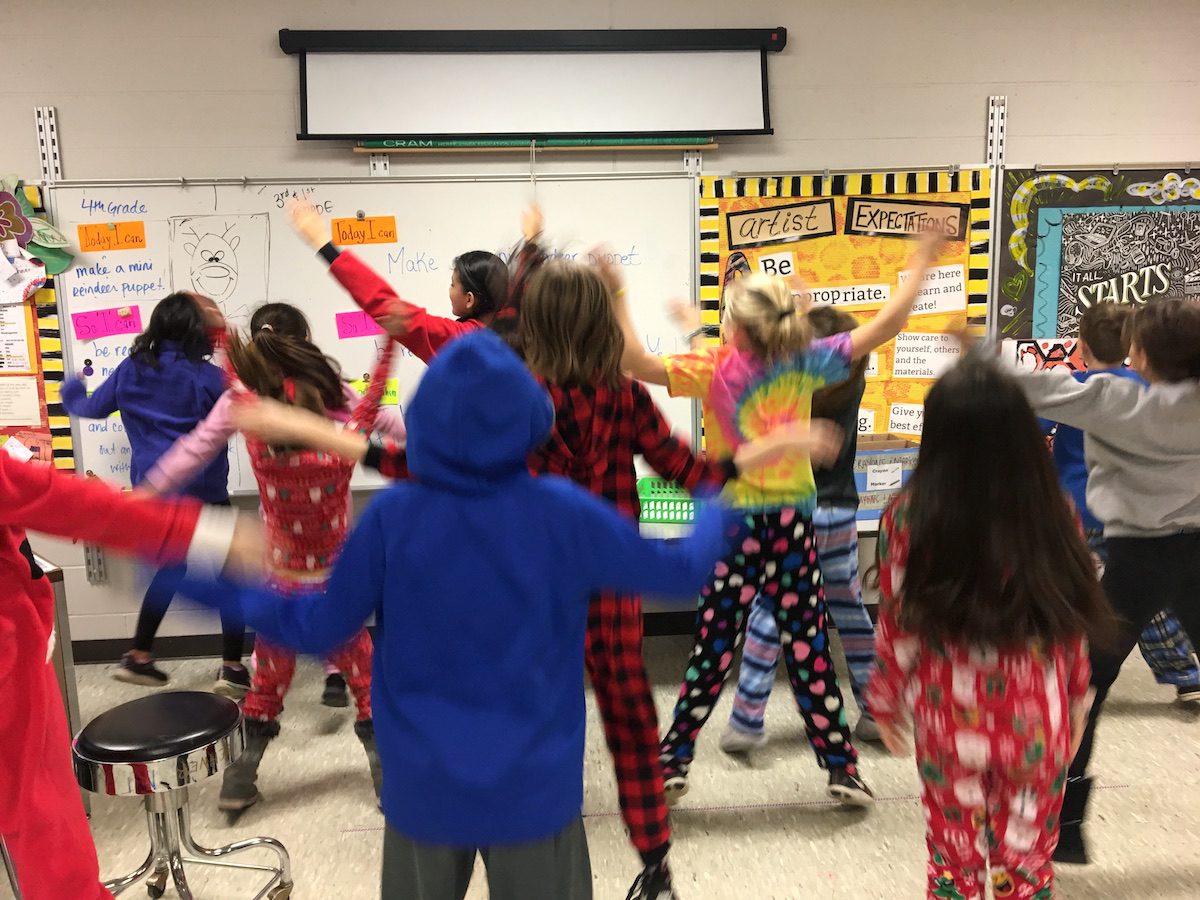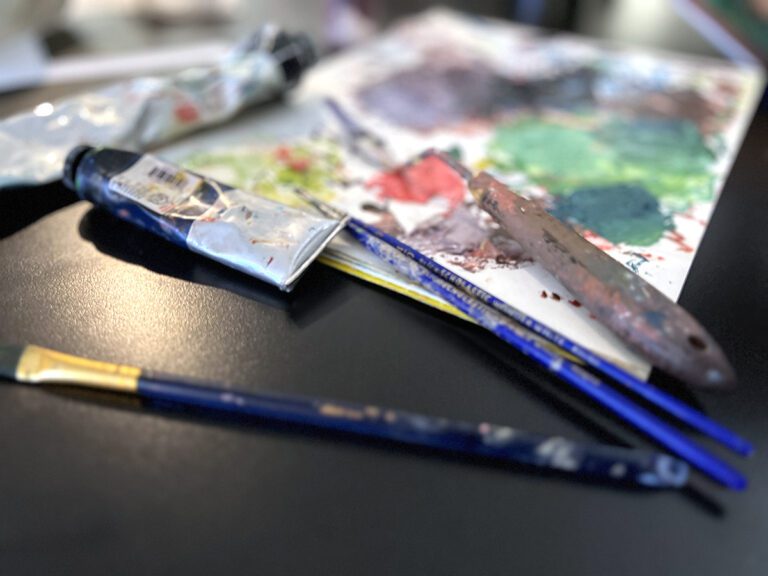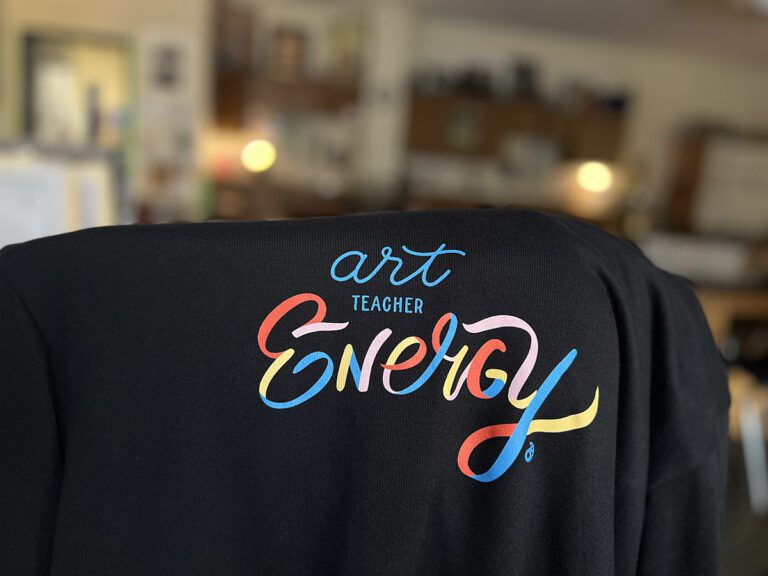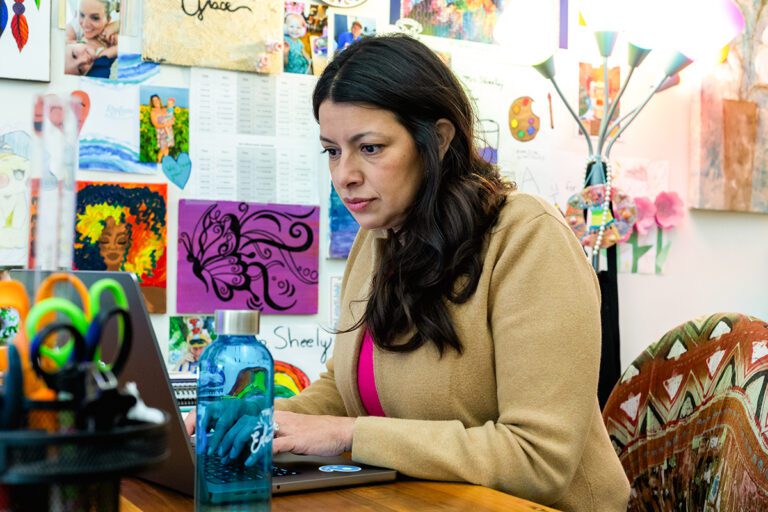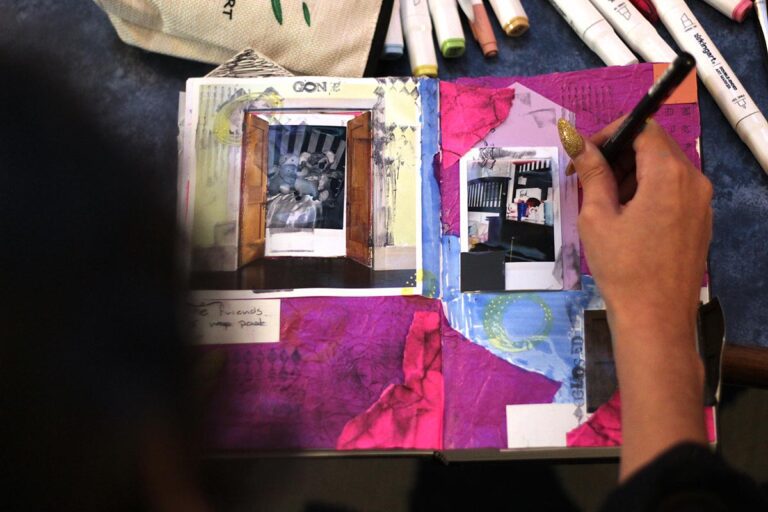You can see it in the shifting, distracted eyes of your students. In their tapping toes, their wiggling bodies, and their unstoppable chattering mouths.
Is it a full moon? Something in the water? No. It’s an indoor recess day.
Whether it’s the rain, the cold, or a dead squirrel on the playground, indoor recess is a fact of life. And on those days, elementary teachers know teaching is going to be rough. The physical movement and fresh air recess provides is irreplaceable. That fact is particularly evident on indoor recess days.
However, the benefit of “getting the wiggles out” is not just for younger students. It is for ALL of us.
As art teachers, our jobs are physical. The slivers of opportunity to sit down and check email can be few and far between in a teaching day. Think about how many times you walk around your classroom. Or when you handle a bundle of awkward materials, hang artwork, go from explaining to demonstrating to advising all within one class period. We are responding to stimuli all while asking our students to sit still, listen, and create quietly. This paradoxical situation is not uncommon. In fact, the emphasis on static classrooms may actually perpetuate distracted learning.
Here’s what Andrew Thurston had to say on the topic in the article Moving to Improve. “Although physical education is mandated in the vast majority of states, a study published in the Journal of School Health in 2007 (the most recent figures available) found that only 3.8 percent of elementary schools, 7.9 percent of middle schools, and 2.1 percent of high schools ‘provided daily physical education or its equivalent for the entire school year for students in all grades in the school.'” That is only a fraction of the sixty minutes of daily physical activity recommended by The Physical Activity Guidelines for Americans for both kids and teens.
This lack of physical activity can’t be ignored as exercise may have both a physiological and developmental impact on children’s brains. John Ratey, author of A User’s Guide to the Brain, calls exercise, “Miracle-Gro for the brain” because of its role in stimulating nerve growth factors.
Physical mechanisms include:
- Increased oxygen to the brain that may enhance its ability to learn
- Alterations to neurotransmitters
- Structural changes in the central nervous system
Furthermore, studies show students’ academic achievement improves when they move around. In Moving to Improve, Thurston uses the words of neuroscientist Justin Rhodes to support this claim. According to Rhodes, “Research shows that when we exercise, blood pressure and blood flow increase everywhere in the body, including the brain.” Rhodes explained this in a 2013 Scientific American column and went onto say, “More blood means more energy and oxygen, which makes our brain perform better.”
As art teachers, we want to address the learning needs of the whole student. As any teacher who has been through a week of indoor recess will testify, movement is a necessary part of learning.
Kids are movement-based learners, but how do we incorporate more movement into our art classrooms?
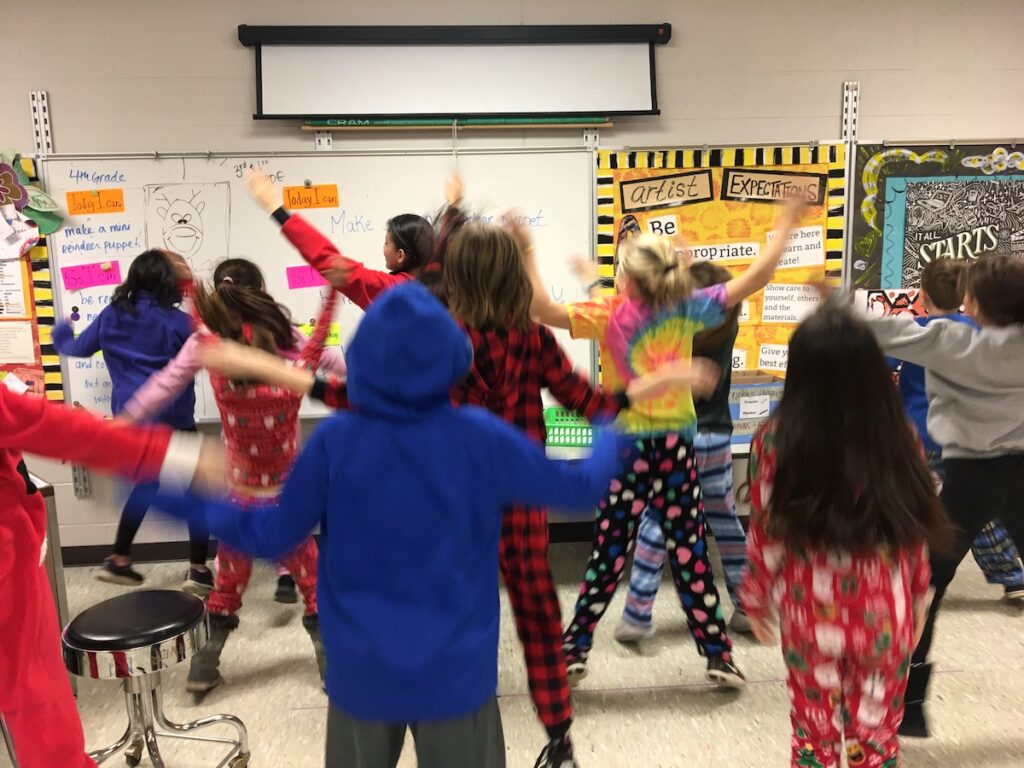
First of all, high-intensity, gym-worthy workouts are not considered recommended physical movement. However, incorporating light exercise or stretch breaks into lessons can add up and sharpen students’ focus. Dividing lessons into eight to fifteen-minute chunks, especially for younger artists, can keep their attention on task as well as increasing artmaking and learning.
Here are 5 ways to use movement in your art classroom, even if your students are older or are lucky enough to have outdoor recess.
1. Make a Movement Routine
For younger artists, it is much easier to bring silly dance-like movement and stretches naturally into the classroom. Create a series of simple stretches students can do at the beginning of every class or even sitting down. For example, reaching high, reaching low, looking to both sides, stretching arms across their bodies, and hugging themselves. See a longer version here. Make it a part of your routine. For older students, explain the benefits of movement to creative practice. Before studio or work time allow students to stretch by themselves.
2. Walk and Draw
Effective for students focusing on their observation skills, lead them on a tour of the school grounds and building. Walk to various locations and ask students to draw what they see. Use novel materials or go to rarely noticed places in the school. Guide them to focus on a particular corner or aspect from their observations. Not only is this a great activity between larger projects, but walking while working will give students’ creative juices a jolt.
3. Do Some Pattern Dancing
When learning pattern and line, show students corresponding movements to particular types of line. What does it look like to walk or “dance” on a zig-zag line? What does a wavy line look like? Then either draw or call out line types for students to mimic. Young students love this kind of practice. Take it a step further by allowing them to design their own dance using lines. Use your classroom space or even a long hallway to practice their lines as you call them out.
4. Reward Students with a Dance Party
For younger artists dancing is free of inhibitions. If students have had a particularly great day in the art classroom, reward them with a dance to their favorite song after cleanup. Use YouTube to find kid-friendly versions of songs or silly dance-alongs. They will not be able to keep themselves from moving to the beat.
5. Have a Standing Desk
Ever have a student who cannot seem to sit down? Why make them? Some artists simply work better while standing up. Bed risers can be used to lift tables to make them standing or studio table height.
Why not incorporate artists who emphasize movement too? Here are 3 ideas.
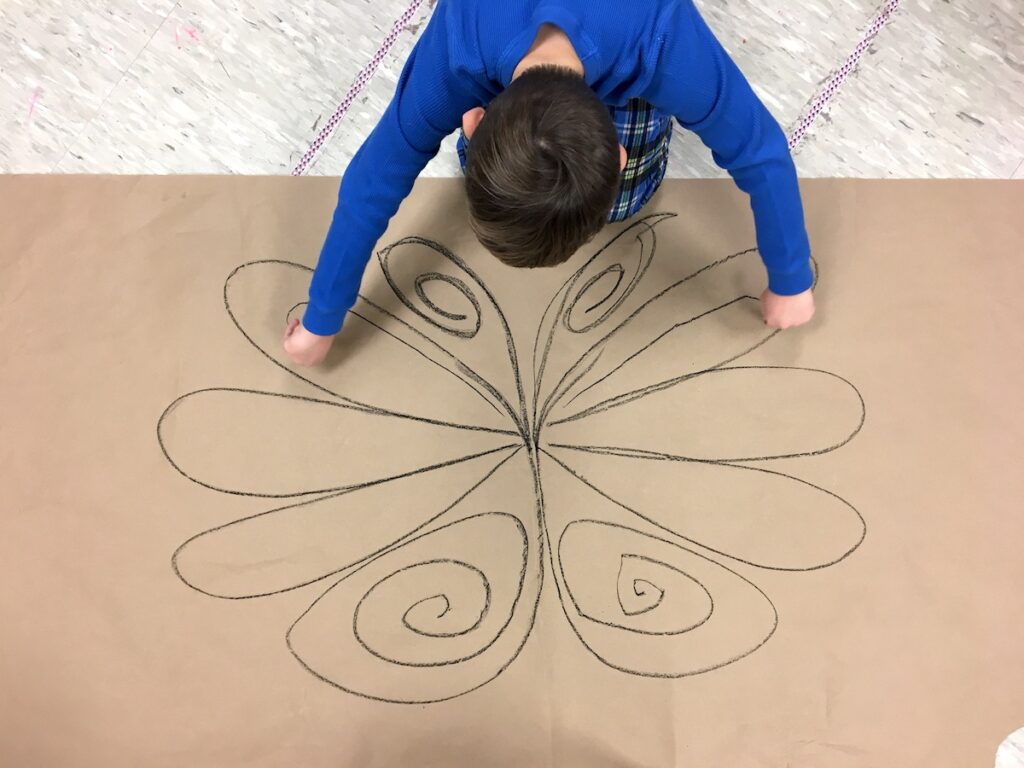
1. Keith Haring – Large Body Tracings
Get out the large roll of butcher paper and markers. Talk about all the fun poses Keith Haring figures make. Have students create life-size tracings. Watch this video for inspiration and to get those bodies moving. Then cut out the tracings and hang them on the walls for all to see.
2. Heather Hansen – Moving Symmetry
Famous for her whole body movement and gigantic symmetrical drawings, Hansen’s work is the perfect movement and art inspiration. Don’t have paper quite as large? Wait for a nice day and get students outside on pavement with chalk!
3. Edgar Degas – Ballet Study
Degas’ iconic ballet dancers captured Impressionism, movement, and the fleeting moment. Show students how his work, though a still frame, brings the viewer into the picture. Can’t you almost feel the excitement of the stage? Have some of your students who study dance show the others basic ballet feet and arm positions. Study them like Degas once did.
Movement is necessary not only in the art classroom on an indoor recess day but also to make their creative work even more meaningful. In using one of the ideas above, incorporating physical activity in the art room may be easier than you think.
How do you use movement in the art classroom?
What is your go-to strategy when students need to “get the wiggles out?”
Magazine articles and podcasts are opinions of professional education contributors and do not necessarily represent the position of the Art of Education University (AOEU) or its academic offerings. Contributors use terms in the way they are most often talked about in the scope of their educational experiences.
